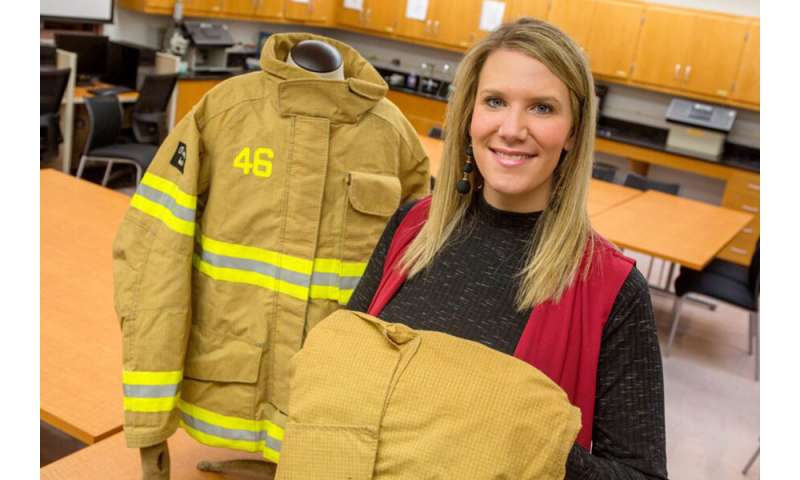Male and female firefighters have different problems with protective suits
LIKE SPACE SUITS FOR WOMEN

When female firefighters put on the protective suits they need for their work, they're often using gear that has been designed for a male body.
Because of that mismatch, the suits don't fit as well as they should, and their mobility is impaired. Firefighters working in gear that restricts their movement must work harder to move around in a stressful and physically demanding environment, which puts them at greater risk of overexertion and heart attacks, the leading cause of on-duty deaths.
New research from Florida State University investigates differences in mobility for male and female firefighters while wearing the gear that is essential for protection from the intense heat of fires. The study is available in the January print edition of the journal Applied Ergonomics.
"There's not enough research to say 100 percent, 'This is what a female turnout suit needs to be,' but we do know women need a suit designed for them," said author Meredith McQuerry, an assistant professor in the Jim Moran College of Entrepreneurship. "The National Fire Protection Association sees the need. There are female and male sizes, but those are oversimplifications that don't take different anthropometric proportions into account, like the waist-to-hip ratio, the bust or shoulder breadth."
Previous studies have investigated the effects of bulky firefighting gear on the movement of male firefighters, but most research has not considered the measurements and range of motion of female firefighters.
McQuerry's study surveyed 16 career firefighters (10 men and six women) from the Tallahassee Fire Department on the fit and mobility of their firefighting gear. The research measured range of motion in three configurations: with only a base layer, with the "turnout suit" firefighters don for protection at the scene of a fire and with a full "turnout ensemble" that includes a breathing apparatus and helmet. The subjects were measured in a three-dimensional body scanner, then performed a range-of-motion test and recorded how comfortable they were and how easy it was to move.
McQuerry found that for both male and female firefighters turnout equipment significantly reduced mobility, but the men and women reported significant differences with the parts of the suit that gave them problems. Women reported more problems with the upper body areas of their turnout suit during overhead activities and were more likely to say that the suits were too large. Men expressed more dissatisfaction with restrictions in the crotch and pant leg during lower body movements.
Because these restrictions are gender specific, there is a strong need to develop a female-specific turnout gear sizing system in addition to the existing gear designed for men, McQuerry said. Researchers should collect more data, including body measurements and mobility assessments with a larger sample size, so that both men and women fighting fires can be equipped with appropriately sized personal protective clothing, she said.
A recently awarded grant of more than $400,000 from the Federal Emergency Management Agency will help McQuerry continue her research.
"We need more data on female firefighter anthropometrics," she said. "A little bit has been done, but it is very limited. We need to conduct more research to understand what all of the barriers are along the production pipeline, from the design, to the sourcing, all the way to the purchasing within the fire service."
The goals for an improved turnout suit are clear, she said: "Better performance, less exertion, better safety."
More information: Meredith McQuerry. Effect of structural turnout suit fit on female versus male firefighter range of motion, Applied Ergonomics (2019). DOI: 10.1016/j.apergo.2019.102974
No comments:
Post a Comment